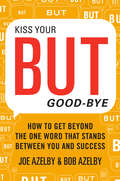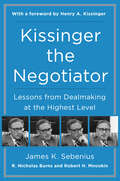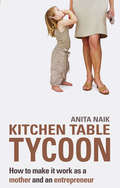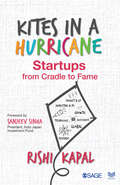- Table View
- List View
Kinyuseisaku: Monetary Policy in Japan (C)
by Laura Alfaro Hilary WhiteAssuming office in December 2012, Prime Minister Shinzo Abe was determined to revive Japan's stagnating economy through an ambitious plan known as 'Abenomics.' Under the guidance of the newly appointed governor of the central bank, Haruhiko Kuroda, the Bank of Japan adopted quantitative easing as its new monetary policy, pledging to double the nation's monetary base in two years through the purchase of long-term government bonds. While Kuroda insisted that Japan needed to "use every means available" to combat deflation, critics wondered whether inflation would increase the nation's public-sector debt to unsustainable levels or outpace growth in wages. Furthermore, skeptics debated whether Prime Minister Abe was wise to make the Bank of Japan the key player in moving the nation toward economic growth. Others questioned whether, unlike in the past, the Bank of Japan would take the necessary steps to carry through with the policy.
Kirchensteuer kompakt: Strukturierte Darstellung mit Berechnungsbeispielen
by Jens PetersenDieses Buch bietet eine strukturierte Darstellung der Kirchensteuer in Deutschland mit besonderem Bezug für den praktischen Gebrauch: Berechnungsbeispiele, aktuelle Rechtsprechung, Übersichten u.v.m. machen den Inhalt sehr anschaulich. Soweit erforderlich erfolgt eine Differenzierung nach Spezifika in den Ländern sowie bei den steuererhebenden Religionsgemeinschaften.Die 4. Auflage befasst sich insbesondere mit den vom Gesetzgeber angedachten Änderungen des Verfahrens zur Erhebung der Kirchensteuer als Zuschlag zur Abgeltungsteuer und dem dazu ergangenen ländereinheitlichen Erlass. Ebenso behandelt werden neue Anlageformen wie z.B. Blockchain-basierte Anlagen, die Abstandnahme von der Erhebung des besonderen Kirchgeldes durch zwei Religionsgemeinschaften, Überlegungen zur Neustaffelung des Tarifes sowie die Erhebung des besonderen Kirchgeldes bei Zugehörigkeit des Ehegatten zu einer Religions- oder Weltanschauungsgemeinschaft, die die Verwaltung der Kirchensteuer durch die Finanzämter nicht in Anspruch nimmt. Zudem wurden die Auswirkungen der soziodemographischen Entwicklung auf die Leistungsfähigkeit kirchlicher Körperschaften auf den aktuellen Stand gebracht. Das Werk erläutert auch die digitale Spende und berücksichtigt die seit der Vorauflage ergangene Rechtsprechung und veröffentlichte Literatur.
Kirk Stone (A)
by Vijay V. Sathe Robert Mueller Jr.Kirk Stone ran into an organization "land mine" when he joined the company. The teaching objective is to understand better how Kirk could have anticipated the company culture and other realities.
Kirkol Vipanan First Semester FYBA New NEP Syllabus - RTMNU: किरकोळ विपणन पहिले सत्र एफ.वाय.बी.ए. नवीन एन.इ.पी. अभ्यासक्रम - राष्ट्रसंत तुकडोजी महाराज नागपूर विद्यापीठ
by Dr Prakash Dehliwalकिरकोळ विपणन हे पुस्तक राष्ट्रसंत तुकडोजी महाराज नागपूर विद्यापीठाच्या बी.ए. प्रथम वर्ष, सेमेस्टर-१ च्या नवीन शिक्षण प्रणाली (NEP) अंतर्गत लिहिलेले आहे. यात किरकोळ विक्री आणि विपणन, पुरवठा साखळी व्यवस्थापन, धोरणात्मक नियोजन, विक्री संवर्धन, आणि ब्रँडिंग यासारख्या महत्त्वाच्या विषयांचा समावेश आहे. आधुनिक तंत्रज्ञान, डिजिटल पेमेंट, आणि कायदेशीर बाबी यांचीही माहिती दिली आहे. मराठी माध्यमातील विद्यार्थ्यांसाठी सहज आणि समजण्यास सोप्या भाषेत लिहिलेले हे पुस्तक विद्यार्थी आणि प्राध्यापकांसाठी उपयुक्त ठरेल.
Kiss That Frog!: 12 Great Ways to Turn Negatives into Positives in Your Life and Work
by Brian Tracy Christina SteinJust like the lonely princess in the fairy tale who was reluctant to lock lips with a warty frog and transform him into a handsome prince, something stops many of us short of attaining our dreams. Our negative thoughts, emotions, and attitudes can threaten to keep us from achieving all that we’re capable of. Here bestselling author and speaker Brian Tracy and his daughter, therapist Christina Tracy Stein, provide a set of practical, proven strategies anyone can use to turn those negative frogs into positive princes. Tracy and Stein present a step-by-step plan that addresses the root causes of negativity, helps you uncover blocks that have become mental obstacles, and shows how you can transform them into stepping-stones to achieve your fullest potential. The book distills, in an accessible and immediately useful form, what Tracy has presented in more than 5,000 talks and seminars with more than five million people in fifty-eight countries and what Stein has learned through thousands of hours of counseling people from all walks of life. “There is nothing either good or bad, but thinking makes it so,” the authors quote Shakespeare. The many powerful techniques and exercises in this book will help you change your mindset so that you discover something worthwhile in every person and experience, however difficult and challenging they might seem at first. You’ll learn how to develop unshakable self-confidence, become your best self, and begin living an extraordinary life.
Kiss Your BUT Good-Bye: How to Get Beyond the One Word That Stands Between You and Success
by Joseph Azelby Robert AzelbyA simple, engaging, and eminently practical guide to overcoming your weaknesses—your "Buts"—to achieve the career and personal relationships you want Imagine a workplace where all the employees are aware of the things they do—or fail to do—that prevent them from being more productive and valuable. Imagine a company where everyone speaks openly and honestly about his or her weaknesses and is committed to strengthening and overcoming them. Imagine an environment where colleagues help one another become more efficient and less disruptive by speaking the truth about what detracts from the team's efforts and objectives. Imagine a place where the firm's most talented employees know exactly what they need to do to attain a leadership position. This is no fantasy workplace: it can be your business if you listen to Joe Azelby and Bob Azelby, brothers and successful executives in their own right.Kiss Your BUT Good-Bye will help all professionals find their individual BUT—whether it's a lack of skills, a distracting behavior, or a personality quirk that interferes with achieving success. Using road-tested techniques, Kiss Your BUT Good-Bye helps you examine your BUT, understand it, manage it, cover it, and most important, shrink it. It also enables managers to help their employees discover personal weaknesses and to learn how to deliver the direct, honest feedback every worker needs and deserves.Finding your BUT can be tough medicine, but the Azelbys deliver it with a tasty spoonful of sugar. Get ready for success . . . get ready to Kiss Your BUT Good-Bye.
Kiss, Bow, Or Shake Hands: The Bestselling Guide to Doing Business in More Than 60 Countries, Second Edition (Kiss, Bow Or Shake Hands Series)
by Terri Morrison Wayne A. ConawayThis is a guide to proper international business protocol. With countries such as China and India taking on a more significant role in the global business landscape, you can't afford not to know the practices, customs, and philosophies of other countries.
Kissinger the Negotiator: Lessons from Dealmaking at the Highest Level
by James K. Sebenius Robert H. Mnookin R. Nicholas Burns“A straightforward examination of Kissinger’s finely honed skills . . . offers keen insight for anyone interested or involved in negotiations at any level.”—James A. Baker III, sixty-first U.S. secretary of stateIncludes a foreword by Henry KissingerIn this groundbreaking, definitive guide to the art of negotiation, three Harvard professors—all experienced negotiators—offer a comprehensive examination of one of the most successful dealmakers of all time.Politicians, world leaders, and business executives around the world—including eleven consecutive US presidents—have sought the counsel of Henry Kissinger, a brilliant diplomat and historian whose unprecedented achievements as a negotiator have been universally acknowledged. The first book of its kind, Kissinger the Negotiator provides a clear analysis of Kissinger’s overall approach to making deals and resolving conflicts—expertise that holds powerful and enduring lessons.James K. Sebenius (Harvard Business School), R. Nicholas Burns (Harvard Kennedy School of Government), and Robert H. Mnookin (Harvard Law School) crystallize the key elements of Kissinger’s approach, based on in-depth interviews with the former secretary of state himself about some of his most difficult negotiations, an extensive study of his record, and many independent sources. Taut and instructive, Kissinger the Negotiator mines the long, fruitful career of this elder statesman and shows how his strategies apply not only to contemporary diplomatic challenges but to other realms of negotiation, including business, public policy, and law.Essential reading for current and future leaders, Kissinger the Negotiator is an invaluable guide to reaching agreements in challenging situations.“A very readable and informative book that will serve future negotiators well. It also presents a new look at the importance of Henry Kissinger’s role in forming the world in which we now live.” —Booklist“An all-star trio of experts on negotiation in business, law, and diplomacy [has] done a great service in elucidating the actions of a very skilled American diplomat.” —The New York Times Book Review“This book, based on deep interviews and research, shows [Kissinger’s] strengths and weaknesses [and] the lessons to be learned.”—Walter Isaacson, #1 New York Times–bestselling author of Elon Musk and Kissinger: A Biography
Kitchen Table Entrepreneurs: How Eleven Women Escaped Poverty and Became Their Own Bosses
by Martha Shirk Anna S. WadiaOver the last five years, the number of women-owned businesses has grown at twice the rate of all U. S. firms; in the next few years, the number is expected to surpass the six million mark. Kitchen Table Entrepreneurs tells the inspirational stories of eleven low-income women who have marshaled the creative energy, confidence, and capital necessary to start their own small businesses. These women, who have used their entrepreneurial skills as a route out of poverty, give an American face to an economic empowerment tool that has enjoyed great success in developing countries. By becoming their own bosses, they not only provide for their children but also inspire them. Though each of their businesses is unique, all eleven of these women have discovered previously unknown strengths as they've struggled to overcome personal and bureaucratic obstacles. All received important assistance from nonprofit organizations supported by the Ms. Foundation for Women, the pioneer funding entity of microenterprise programs in the United States. Updated with a new epilogue.
Kitchen Table Tycoon: How to Make it Work as a Mother and an Entrepreneur
by Anita NaikAre you eager to combine the roles of mother and entrepreneur but wondering how to get started? If so, you are not alone. Many mothers are starting up on their own, eager to cut out the nursery fees and see more of their kids. If that sounds like your dream, this book can help make it a reality. Having worked from home for 16 successful years, Anita Naik can give you the true, nitty-gritty details on what it really means to start and run a business from your kitchen table, including:* How to find out if you're suited to working on your own * How to deal with mummy versus work guilt* How to juggle family, work and YOU time * And where to go for support, help and advice Kitchen Table Tycoon also shows you how to research a business idea, find your start-up costs, and navigate your way through the inevitable ups and downs. With inspiring stories and advice from successful entrepreneurial mothers, even the most nervous of mumpreneurs can learn how to have a great business and a great life.
Kitchen Table Tycoon: How to make it work as a mother and an entrepreneur
by Anita NaikAre you eager to combine the roles of mother and entrepreneur but wondering how to get started? If so, you are not alone. Many mothers are starting up on their own, eager to cut out the nursery fees and see more of their kids. If that sounds like your dream, this book can help make it a reality. Having worked from home for 16 successful years, Anita Naik can give you the true, nitty-gritty details on what it really means to start and run a business from your kitchen table, including:* How to find out if you're suited to working on your own * How to deal with mummy versus work guilt* How to juggle family, work and YOU time * And where to go for support, help and advice Kitchen Table Tycoon also shows you how to research a business idea, find your start-up costs, and navigate your way through the inevitable ups and downs. With inspiring stories and advice from successful entrepreneurial mothers, even the most nervous of mumpreneurs can learn how to have a great business and a great life.
Kitchens
by Gary Alan FineKitchens takes us into the robust, overheated, backstage world of the contemporary restaurant. In this rich, often surprising portrait of the real lives of kitchen workers, Gary Alan Fine brings their experiences, challenges, and satisfactions to colorful life. A new preface updates this riveting exploration of how restaurants actually work, both individually and as part of a larger culinary culture.
Kites in a Hurricane: Startups from Cradle to Fame
by Rishi KapalStartups, even the ones started by mature founders, required a lot of investment—both monetary and intellectual—on their entrepreneurial journey in terms of development and collaboration of the ecosystem. There are a million stories out there of successes and failures, of big and small startups, of one-of-a-kind and of every kind of startup. However, one thing is common: the entrepreneurial journey is checkered with highs and lows, difficult decisions, roadblocks, perseverance and lots of advice. Kites in a Hurricane is a book that describes how several startups used technology and entrepreneurial systems in an innovative manner to solve the problems they faced day after day when aspiring to build successful companies. No one understands this world better than Rishi Kapal who spends all his waking hours surrounded by startups. This book is the essence of his experience with over 500 startups—it will help newer startups navigate through the exciting yet onerous entrepreneurial journey. You will feel like an insider in the boardroom discussions and decisions of some of the successful startups.
Kitopi: The Brave New World of Cloud Kitchens
by Gamze Yucaoglu Antonio MorenoThe case opens in February 2021 as Mohamad Ballout, co-founder and CEO of Kitopi, a Dubai-based managed cloud kitchen platform, is looking over the company's 2020 results. Propelled by the COVID-19 pandemic, delivery orders had been on the rise globally and dine-in restaurants were more than ever focused on profitability. Against this backdrop, Kitopi had seen high traction in its business and the management needed to decide on which growth opportunities to focus. The case provides an overview of the pain points of the various players in the on-demand food ecosystem -the aggregators, the restaurants and the customers- and lays the ground for the nascent cloud kitchen business worldwide complete with the competitive outlook. The case also provides a detailed overview of how Kitopi structured its kitchens, how the company developed proprietary software to track space utilization and efficiency across its operations, and how it built it supply chain capabilities. While the B2B positioning of the company enables Kitopi to help restaurants expand much faster and in a less costly way, the company is mainly invisible to customers who don't know that their food order is coming from a central kitchen. Also, the company has been witnessing the consolidation of aggregators across its markets. The case puts the reader in Ballout's shoes, who wondered if the company could feasibly continue to own the supply side of the business and retain its position as a primarily B2B company without risking being squeezed out by the aggregators, who owned the customer relationship and data. Should the company focus on building on its currently small B2C arms, consider licensing it tech stack, or be squarely focused on its core business?
Kiwanis Club of Birmingham, The (Images of America)
by James L. Noles Jr.When founded in 1917, the Kiwanis Club of Birmingham, Alabama, embarked on a civic-minded journey that would take it through a century of service and tradition. The club’s membership rolls would ultimately boast some of the most distinguished leaders in Birmingham’s business community. At their weekly lunches, they would be entertained by both local and national speakers and visitors, ranging from Babe Ruth to Tom Brokaw. Equally importantly, the club’s tradition of generosity continues to resonate in Birmingham today as the club celebrates its centennial year in 2017. The club’s endeavors include commissioning a master urban parks plan for Birmingham in 1924, erecting the city’s iconic statue of Vulcan atop Red Mountain, funding the construction of Birmingham’s Boys Club, sponsoring professional football games at Birmingham’s historic Legion Field in the 1960s, and more recently, funding a $4-million project to enhance Vulcan, build the Kiwanis Centennial Park, and establish a key link in Birmingham’s Red Rock Ridge and Valley Trail System.
Kjell & Company: Electronics Accessories Retail in the Nordics
by Krishna G. Palepu Das Narayandas Kerry HermanSwedish electronics accessories retailer Kjell is considering several issues as it plots its next stage of growth. How should it balance opportunities to expand retail stores into a new market (Oslo, Norway) with additional growth in its home market-Sweden-with decisions about investments to build out its nascent online channel? Simultaneously, the company is piloting a new sales associate performance management system: should store associates be measured by monthly targets, or will daily targets prove to be more useful?
Kjell and Company: Motivating Salespeople through the Sales-Force Compensation Plan (A)
by Doug J. ChungCase
Kjell and Company: Motivating Salespeople through the Sales-Force Compensation Plan (A)
by Doug J. ChungCase
Kjell and Company: Motivating Salespeople through the Sales-Force Compensation Plan (B)
by Doug J. ChungCase
Kjell and Company: Motivating Salespeople through the Sales-Force Compensation Plan (B)
by Doug J. ChungSupplement
Kjell and Company: Motivating Salespeople with Incentive Compensation (A)
by Doug J. ChungKjell & Company was a Swedish retail electronics chain. The company's products consisted of home electronics and accessories. The company was noted for its excellent customer service and a fair "one-for-all" HR policy. Historically, the salespeople had been compensated by a fixed salary and a variable commission conditional on meeting a monthly sales quota. Anecdotal evidence suggested that the monthly-quota compensation scheme might have demotivated some salespeople toward the end of the month, as those who fell short early in a month simply gave up because they had no chance of meeting quota. Thus, to mitigate this problem, management proposed a shorter-temporal-horizon daily-quota scheme. The (A) case focuses on the decision faced by the CEO on whether to change the sales force compensation plan to a temporally shorter scheme and, if so, how to implement the change. The (B), (C), and (D) cases show the results of various metrics across different types of salespeople after the change in the compensation plan was implemented. The case series explores different ways to analyze data for inference about salespeople's behavior caused by a change in the compensation structure. Also, the case series shows ways to experiment with the compensation plan for causal inference.
Kjell and Company: Motivating Salespeople with Incentive Compensation (B)
by Doug J. ChungKjell & Company was a Swedish retail electronics chain. The company's products consisted of home electronics and accessories. The company was noted for its excellent customer service and a fair "one-for-all" HR policy. Historically, the salespeople had been compensated by a fixed salary and a variable commission conditional on meeting a monthly sales quota. Anecdotal evidence suggested that the monthly-quota compensation scheme might have demotivated some salespeople toward the end of the month, as those who fell short early in a month simply gave up because they had no chance of meeting quota. Thus, to mitigate this problem, management proposed a shorter-temporal-horizon daily-quota scheme. The (A) case focuses on the decision faced by the CEO on whether to change the sales force compensation plan to a temporally shorter scheme and, if so, how to implement the change. The (B), (C), and (D) cases show the results of various metrics across different types of salespeople after the change in the compensation plan was implemented. The case series explores different ways to analyze data for inference about salespeople's behavior caused by a change in the compensation structure. Also, the case series shows ways to experiment with the compensation plan for causal inference.
Kjell and Company: Motivating Salespeople with Incentive Compensation (C)
by Doug J. ChungKjell & Company was a Swedish retail electronics chain founded in 1988 by brothers Marcus, Mikael and Fredrik Dahnelius. The company operated 84 stores, all company-owned, located mainly in the metropolitan areas of Sweden's most popular cities: Stockholm, Gothemburg and Malm . The company's products consisted of home electronics, accessories for home electronics and cellular phones (e.g., networking accessories, headsets and phone cases), and parts for consumer electronics and appliances (e.g., semiconductors and switches). The company was noted for its excellent customer service and a fair "one-for-all" HR policy. The company had a direct sales force of about 350 in-store salespeople. The salespeople historically had been compensated by a fixed salary and a variable commission conditional on meeting a monthly sales quota. Anecdotal evidence suggested that the monthly-quota compensation scheme might have demotivated some salespeople toward the end of the month, as those who fell short early in a month simply gave up because they had no chance of meeting quota. Thus, to mitigate this problem, management proposed a shorter temporal horizon daily-quota scheme. The (A) case focuses on the decision faced by the CEO, Thomas Keifer, on whether to change the sales force compensation plan to a temporally shorter daily-quota scheme and, if so, how to implement the change-that is, whether to run a pilot study with the new plan (implementing it at a few selected stores) or to launch the plan at all stores simultaneously. The (B), (C), and (D) cases show the results of various metrics across different types of salespeople after the change in the compensation plan was implemented. The case series explores different ways to analyze data for inference about salespeople's behavior caused by a change in the compensation plan. Also, the case series shows ways to experiment with the compensation plan for causal inference.










